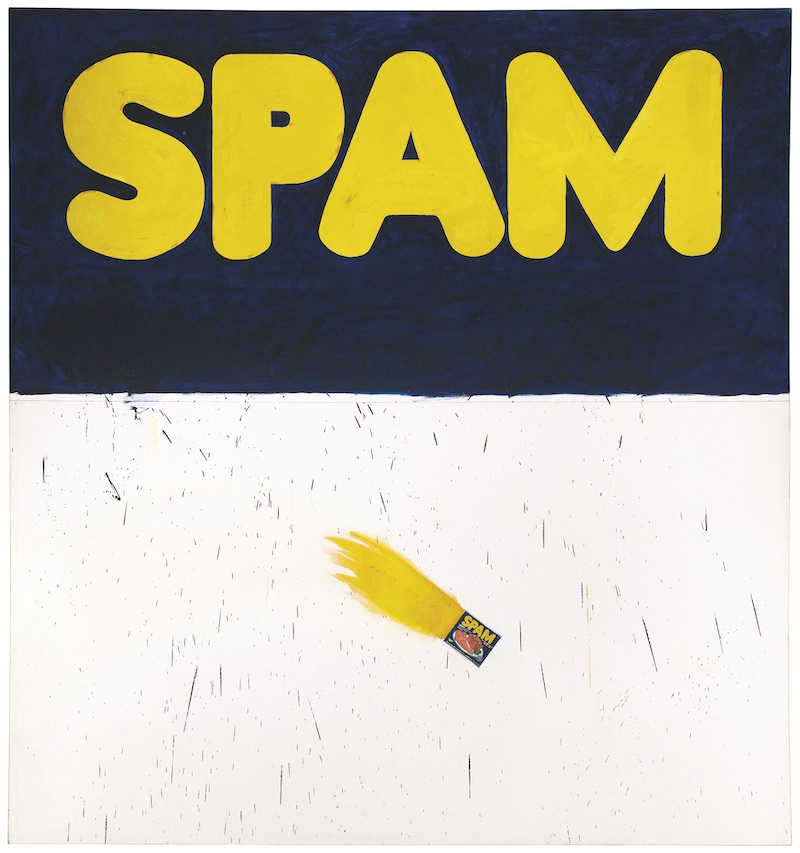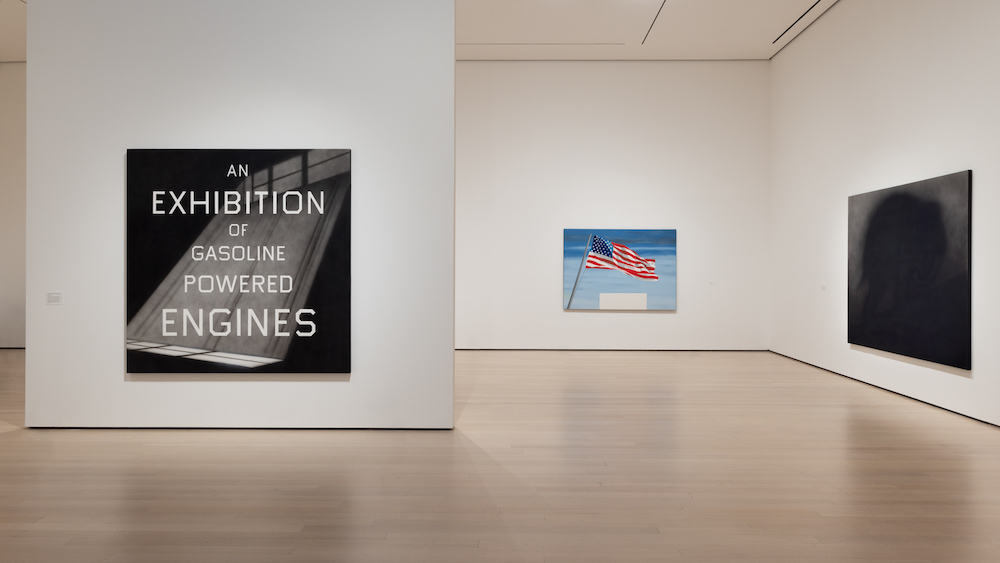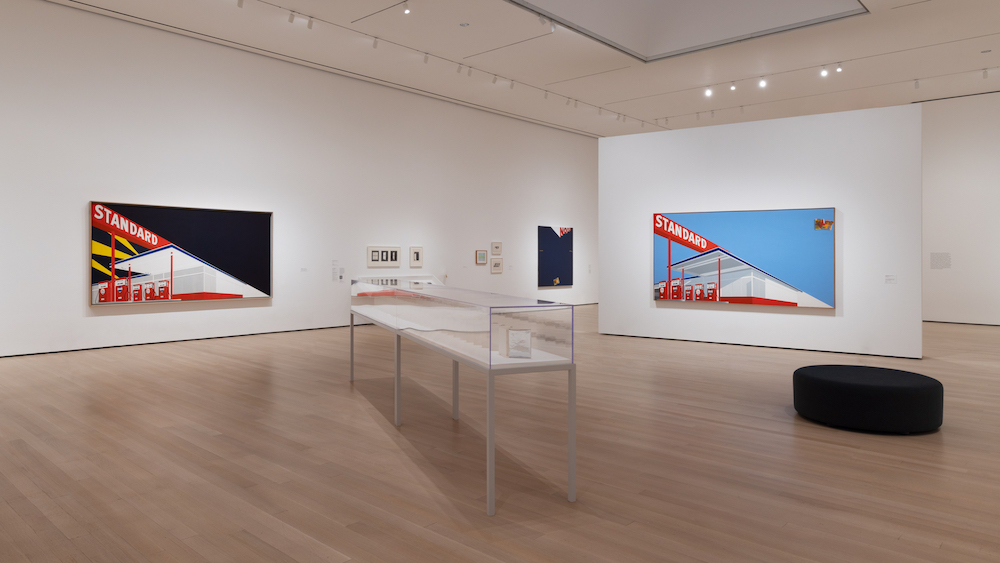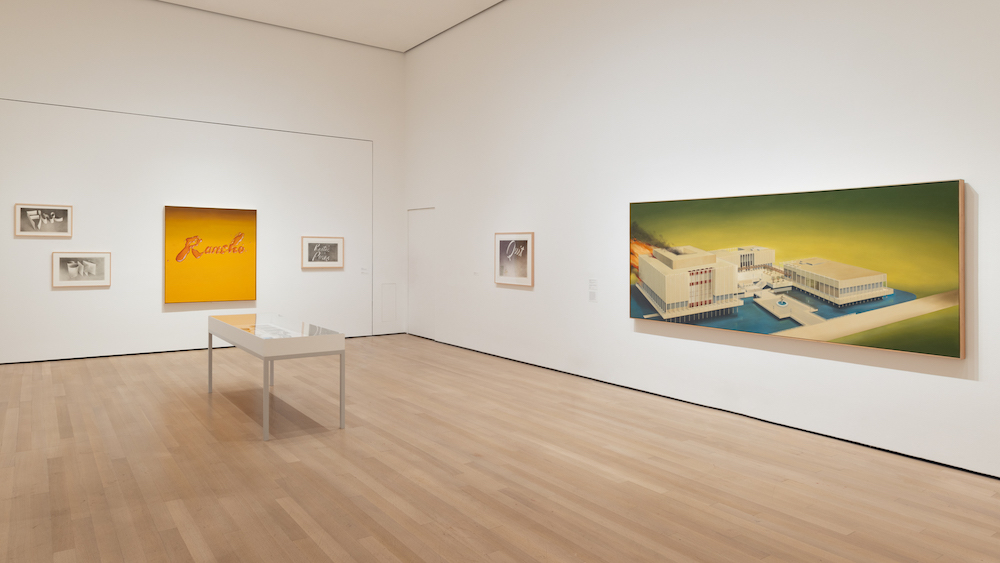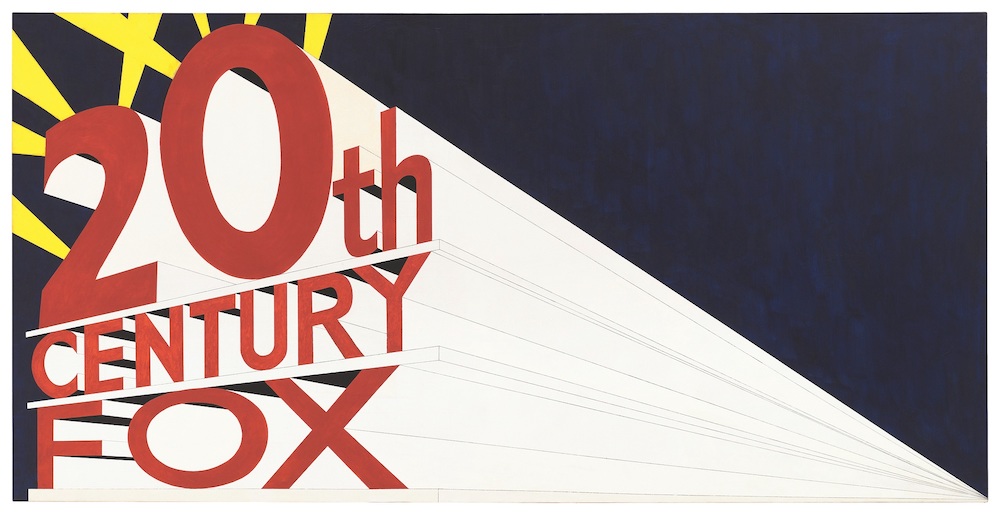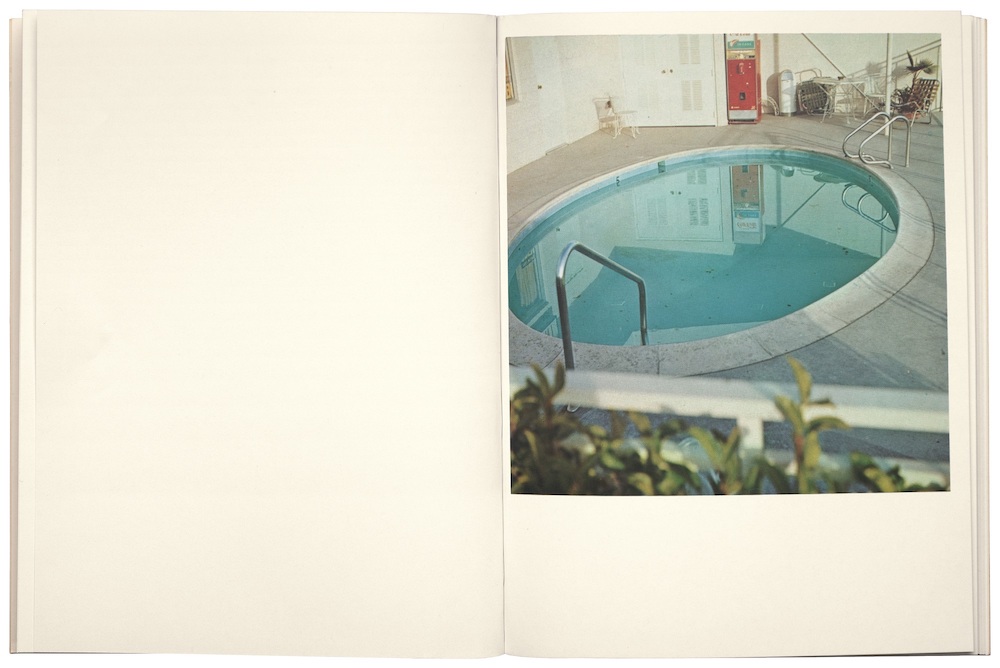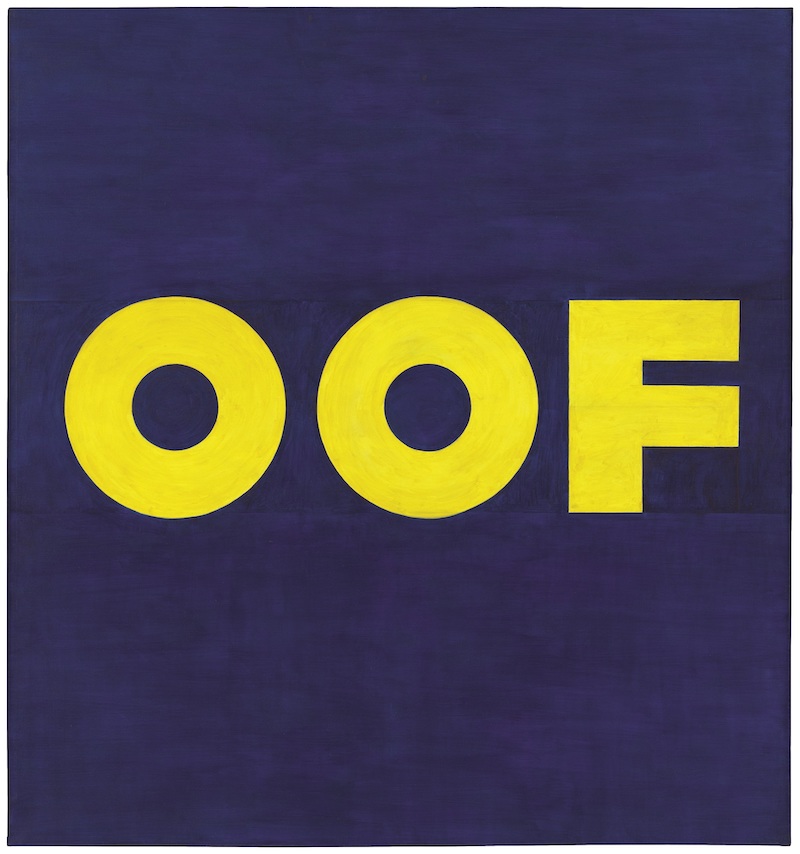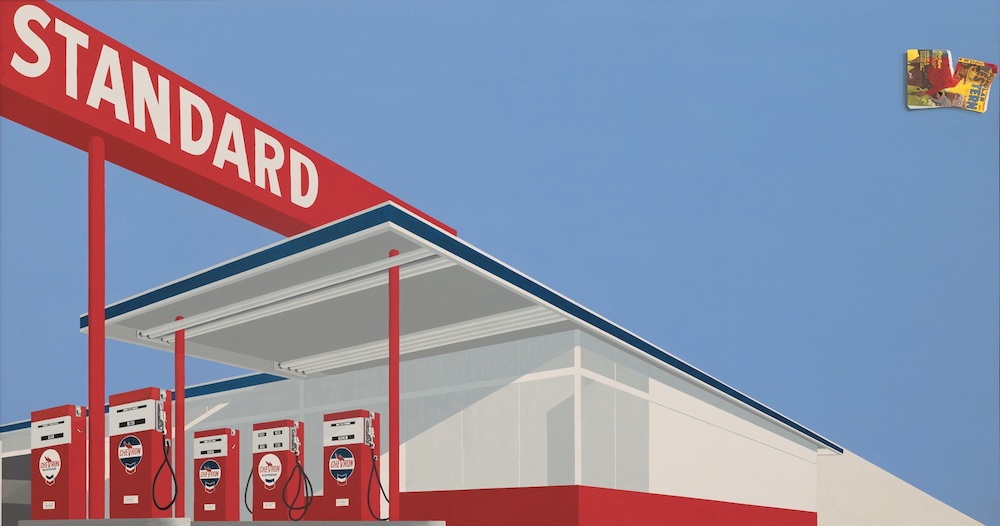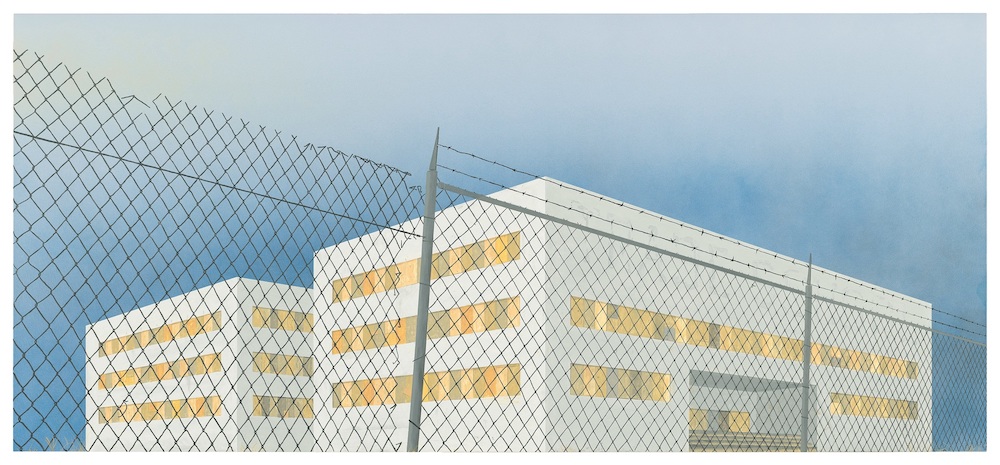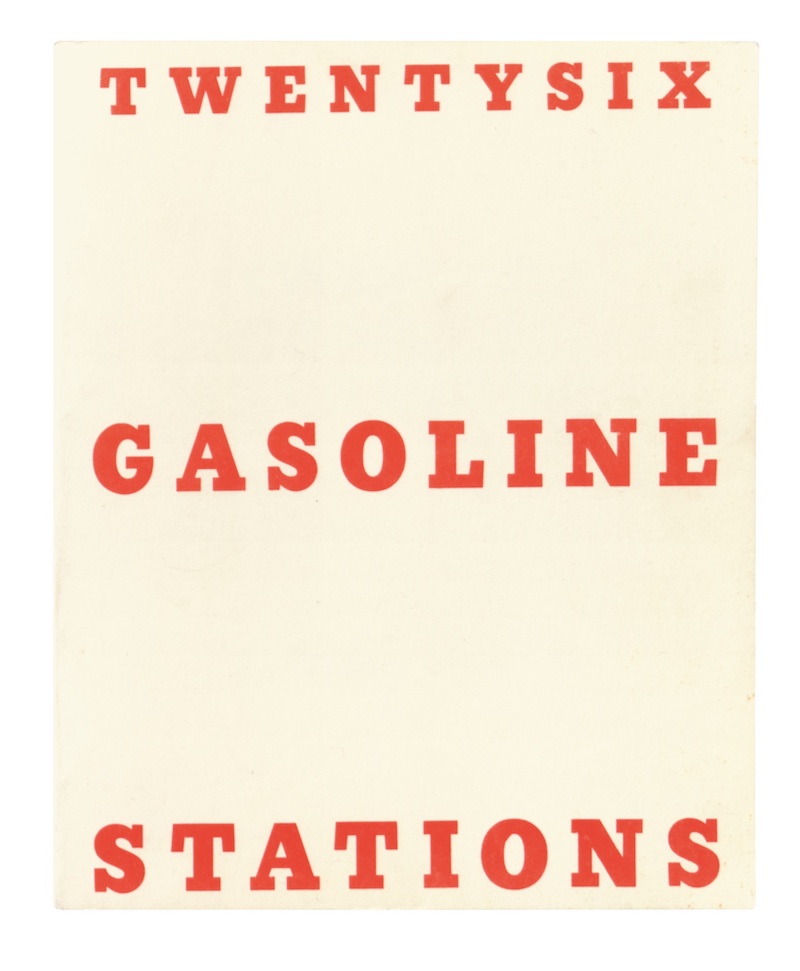My colleague and I decided to walk through the massive ED RUSCHA / NOW THEN backwards. As in, enter through the end and walk to the beginning and then from the beginning to the end again. When perhaps one of the most famous American artists starts his career-defining retrospective at MoMA with the quote, “I don’t have any Seine River like Monet... I’ve just got US 66 between Oklahoma and Los Angeles," highways go both ways so start at the end and end at the beginning. And then beginning to end. As a master of words, a commander of language and subtext, as someone interested in the shape of things and the repetition of things and the power of seemingly obtuse and banal things, Ruscha has, in a sense, been at the forefront of postwar American art, a linguist of expansion and scientist of scale. What has often struck me about Ruscha is that even though he paints as if the skies would never end and the landscape was ever so mighty and vast, he was also obsessed with the minutiae of humankind. And that is why ED RUSCHA / NOW THEN is so substantially satisfying.
Of course, there are the standard oil station paintings, the anticipated recreated chocolate room, the OOF, the office buildings, 20th Century Fox recreation and his early works with ideas of automotives and industry as a young man in Los Angeles, but it's the book making, documentation and obsessive attention to detail that is so brilliantly shown here. That he took a photo of every building on the Sunset Strip. That he photographed apartment buildings throughtout LA in a sort of dreamscape of suburbia and faith. He documented gas stations. He played with words. He played with the shape of letters. He repeated himself. We often think of Ruscha as the great California artist who turned the idea of the freeway and surburban sprawl into something a gallery or museum could hold onto. But really, he just wanted us to notice our own watching of the world. To be try and be a viewer who views all things in an equal way.
As I walked into the show at the end, there was three works that greet and say goodbye to you. There is a painting of two faucets with running water, with another painting underneath that reads, "IT IS IT." On the other side of the wall is long, horizontal work of a freeway guardrail, simply constructed. In the context of Ruscha, it felt like it was everything. The road, the proclamation, the water that still runs. This may be a retrospective, but there is vitality in reintroducing ourselves to the work. —Evan Pricco

